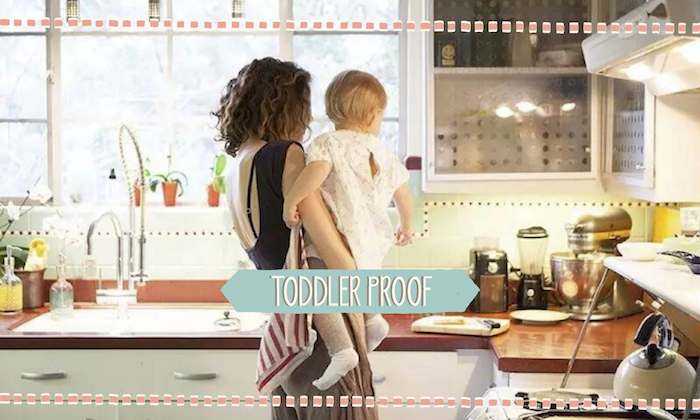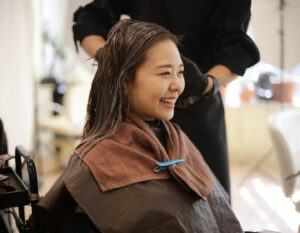
Your toddler’s on the move…
Cover all your bases with these childproofing tips!
Congratulations on your new little, a source of joy and delight for years to come! While builders and architects have begun to incorporate elder-friendly features into homes, few create fully child-safe houses. This is your project, mama. But it doesn’t have to be painful or expensive. This guide will show you how…
Childproofing 101
Childproofing means temporarily altering parts of your house to keep curious children out of danger, all while preserving your own access to the house. This process is cleanly divided into two areas: things to buy and things to do.
The first category involves the purchase and installation of childproofing products. Electrical outlet covers are a classic example of this. The second category involves viewing your house with a critical eye and making temporary changes.
Before you begin, it helps to know what you are guarding against. The Centre For Disease Control and Prevention (CDC) has identified several ways our kids can get hurt. Falls account for the majority of emergency room visits.The remainder of injuries result from electrical shocks and burns, water hazards, and accidental ingestion of common household cleaners and medicines.
Required Items to Buy and Install
- Electrical Outlet Covers
Installing electrical outlet covers, long a rite of passage for new parents! An easy fix is to install outlet covers. Plastic outlet caps are the cheapest solution. But because they are difficult for parents to remove – and as a loose item, they can get lost – many parents are resistant to plugging them back in. A better solution is a spring-loaded outlet cover that replaces your existing cover.
- Furniture and Heavy-Object Tie-Downs
Children love to climb. Where you see a mere bookcase, a toddler sees a ladder leading up to enticing delights.
Consider any heavy, freestanding object to be a tip hazard, including flat-screen, computer monitors, bookcases, and dressers.

How To Secure Your Tip-Over Items
Adopt the mentality of a person living in an earthquake zone and assume that every tall, top-heavy, or high object will fall when your child disturbs it.
- Flat-screen televisions should be either wall-mounted or, if placed on a stand, anchored to the stand with straps.
- Dressers should be fitted with stops that prevent children from pulling out drawers. Most dressers will topple when all of the drawers are extended, or even when the top couple of drawers are out.
- For top-heavy furniture, purchase strong nylon straps intended for tying down furniture
- Go behind the dresser or bookcase. Screw one end of the strap to a solid section of the furniture. Furniture often has a thin particle board backing. Avoid screwing into this board, as the screw will easily pull out.
- On the wall, locate the nearest stud with a stud finder. Stud finders are inexpensive and readily available at hardware and home improvement stores.
- Push the piece close to the wall. Screw the other end of the strap into the stud. Make sure that the strap has no slack, as straps with some “give” may tear the screw from the wall.
Window Guards
Window screens do not keep children safe. Living in Hong Kong means that there are plenty of windows to prep to ensure no accidents happen. You can find window guards or bolts at your local hardware store or pick them up at stores like Bumps to Babes.
Things You Can Do To Babyproof Your Home – No Purchase Necessary
- Perform home reconnaissance – on your hands and knees – starting at the front door and methodically working through the house, room by room.
- Avoid using baby walkers, as they only increase your child’s mobility. With mobility comes access to dangerous areas.
- Bathtub supports and rings give parents a false sense of security; instead, always be in the bathroom and always be touching baby.
- Either purchase a new crib or make sure that the hand-me-down crib you are using conforms to the most recent CDC-mandated guidelines for safety.
- Turn down the temperature of your water heater to avoid scalding.
- Tuck electrical cords away and push heavy furniture in front of outlets. This will prevent your child from pulling on the cords.
- Store medicines and cleaning fluids on high shelves.
- Separate or cut window blind cords. Although it is important to note that the safest window-coverings don’t include any cords that could potentially harm a child.
- Ensure that smoke alarms are operable and that batteries are fresh.
- Remove area rugs and runners near staircases or other dangerous areas.
Childproofing Products You May Not Need
When you have a young child, your view of the world suddenly changes. Because your once-peaceful home now appears to be riddled with landmines, it is easy to be caught up in the frenzy of buying into every babyproofing idea thrown your way.
But kids are resilient, and it is not necessary to soften every imaginable surface. To avoid turning your house into a giant padded bubble (and to save money), consider avoiding these items or purchasing them sparingly:
- Countertop Foam Guards: Overly concerned parents may think it is necessary to cover every countertop edge with these foam bumpers. Unless you have especially sharp edges or pointy corners, these are not needed.
- Foam Guard Door Stoppers: These foam “horseshoes” clamp around the edge of a door and prevent them from closing. Unless the door is unusually heavy, these are not necessary, as most interior doors are light-weight hollow-core doors. You can find these at your local convenient stores like Japan Home or Jusco.
- Knob Covers for Every Single Door: Used judiciously, knob covers – plastic spheres that prevent children from turning door knobs.
- Bath Faucet Spout Covers: Often moulded in the shapes of animals or cartoon characters, these soft plastic covers snap over bathtub faucets. Yes, spout covers do protect your child in the rare event that he bumps against the faucet. Their main value, though, is entertainment: kids love playing with them! If a relative or friend wants an inexpensive gift idea for baby, this is one you can suggest. Otherwise, it is not a priority purchase for you.
- Bathtub Bumpers: Soft, vinyl-covered foam pads that cover the entire inner surface of your bathtub are unnecessary if you are always in the room and tending to your child when he or she is bathing.

It is important to keep your child’s safety in healthy perspective. Children are resilient, and serious injuries are rare. At the same time, their safety exponentially increases when you undertake intelligent and informed childproofing precautions around your home.
![]()
Thank you to Fix.com for providing such helpful tips!
 View All
View All











 View All
View All





 View All
View All


 View All
View All











